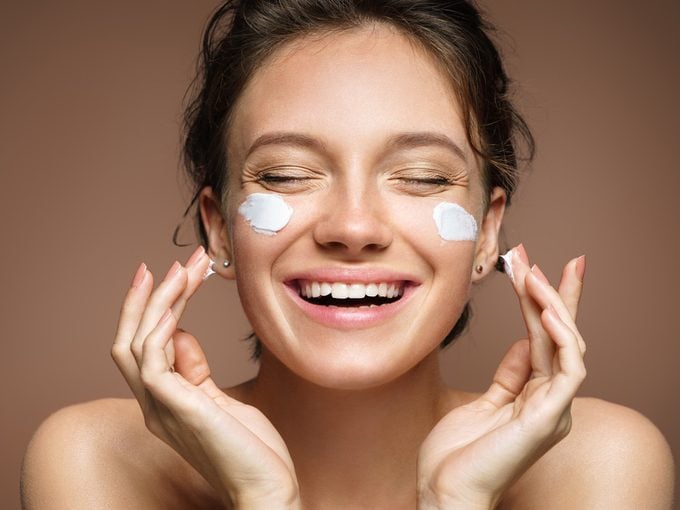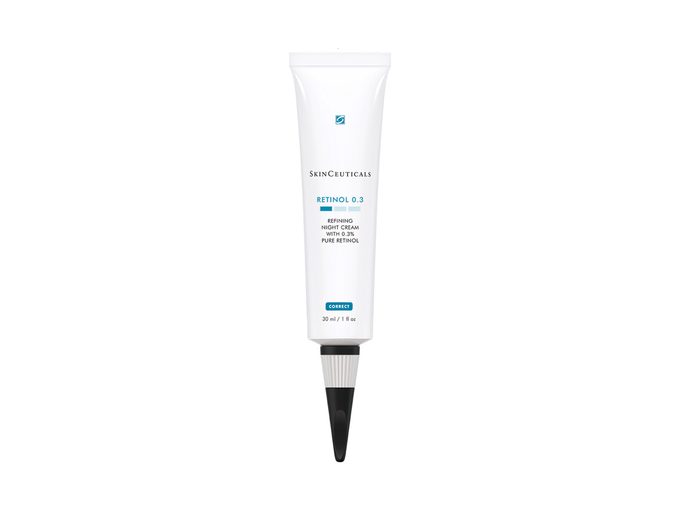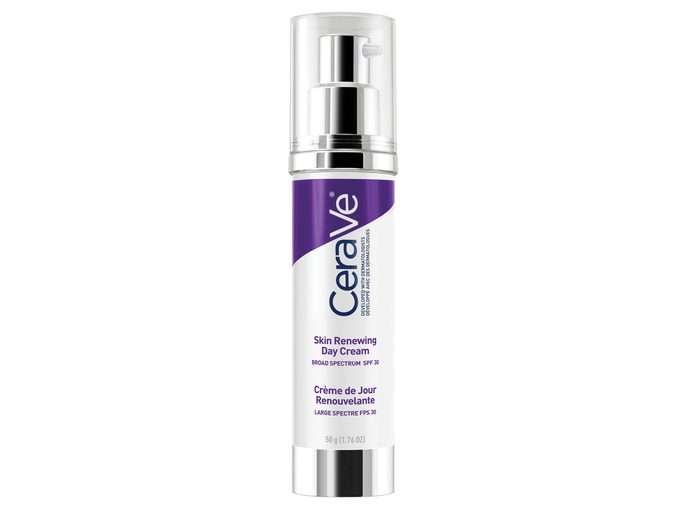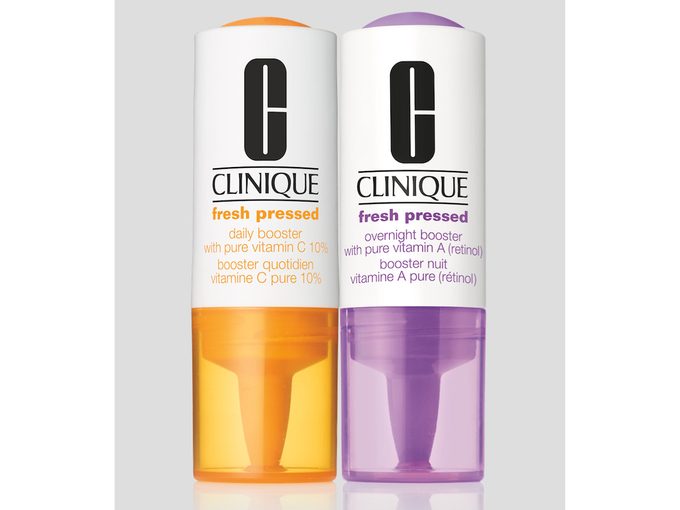Retinol Newbie? Here’s How to Get Started
Expert advice on the benefits of retinol and how to get started if you're new to this powerful anti-aging ingredient.

Retinol benefits for newbies
What’s the secret to youthful skin? Ask any skin expert and chances are they’ll say retinol (in addition to sun protection, of course). Retinol is a form of vitamin A and you’ve likely seen it listed as an ingredient on night creams, overnight masks and even acne treatments. The reason so many experts swear by it is because it’s a proven powerhouse when it comes to increasing cell renewal and boosting collagen production. Retinol benefits everything from the early signs of aging to acne and skin texture. But, this miracle ingredient isn’t without its hangups. Retinol does have some side effects which can make your skin more sensitive. To help you understand if retinol is right for you, we got the facts from Chloe Smith, National Education & Scientific Communications Lead at SkinCeuticals Canada.
What are the benefits of retinol?
“The benefits of retinol include reducing the appearance of fine lines, lightening pigmentation (brown spots), treating acne, improving skin texture, and evening out skin redness. Honestly if you have any skin issue, retinol will fix it!”
Can anyone use retinol? Who shouldn’t use retinol?
“Generally, most people can use retinol. This is more a matter of who is willing to push through the ‘adjustment phase’ of retinol, which can include redness and peeling for the first few weeks of usage. If you can power through the adjustment phase, the benefits are worth it! Pregnant, trying to become pregnant, or breastfeeding women should not use retinol.”
What side effects could occur?
“Typical side effects are redness and peeling. Some people even experience a slight increase in blemishes as the skin ‘purges’ itself of acne (if you have acne). These side effects are completely normal and to be expected. What is not normal is burning when the skin comes into contact with water or other skincare products. If this happens, stop using retinol and consult your skincare professional.”
Where should someone new to retinol start?
“When starting retinol, please consult with your skincare provider to make sure it is right for you. Generally, a new retinol user should start off with a low dosage of pure retinol between 0.25% and 0.3%. It is beneficial to find a formulation that uses encapsulation technology. Encapsulation forms a bubble around each retinol molecule that helps deliver it to the right areas of the skin. This helps decrease irritation. Additionally, I recommend looking for soothing ingredients like chamomile that calm irritation before it starts. Remember, go slow and don’t rush your frequency of use! 1x per week is enough, and you can slowly increase usage as your skin gets used to retinol.
An example of a routine for a new retinol user would be:
◦ Week 1: apply retinol on Sunday
◦ Week 2: apply retinol on Sunday
◦ Week 3: apply retinol on Sunday
◦ Week 4: apply retinol on Sunday and Wednesday
◦ Week 5: apply retinol on Sunday and Wednesday
◦ Week 6: apply retinol on Sunday and Wednesday
◦ Week 7: apply retinol on Sunday, Tuesday, Friday
◦ Week 8: apply retinol on Sunday, Tuesday, Friday
◦ Week 9: apply retinol on Sunday, Tuesday, Friday
◦ Week 10: apply retinol on Sunday, Tuesday, Friday
◦ Week 11: apply retinol every other night
◦ Week 12: apply retinol every other night
◦ Week 13: apply retinol every other night
◦ Week 14: apply retinol every other night
◦ Week 15: apply retinol every night
◦ Continue applying every night for as long as your skincare provider instructs (this can be indefinitely).
How often you increase your usage depends on how your skin is reacting to retinol. If you have no sensitivity (redness or peeling), you can increase your usage faster. If you have sensitivity, decrease your frequency of usage.”
Do you have any specific tips for dry skin types who want to incorporate retinol in their regimen?
“Dry skin is naturally more sensitive, so start off slow with retinol usage. Start with using retinol 1x per week, and gradually increase frequency of usage to daily use. This can take a couple months, so be patient! Dry skin can incorporate a ceramide dominant product like SkinCeuticals Triple Lipid Restore 2:4:2 ($150; skinceuticals.ca), which will decrease retinol associated sensitivity, redness, and peeling. The best way to use retinol with Triple Lipid Restore 2:4:2 is to apply retinol to a clean dry face, wait 10 minutes, then apply Triple Lipid Restore 2:4:2 on top.”
Get Started with Retinol: 3 to Try

This formula features an encapsulation system of pure retinol to deliver all the benefits of retinol with less irritation. The 0.3% dosage is perfect for newbies or more sensitive skin types. SkinCeuticals Retinol 0.3 ($70; available at skinceuticals.ca)

Normally you would want to apply retinol in the evening because it’s known to make your skin more sensitive to UV; however, this day cream is formulated with encapsulated retinol and broad spectrum SPF to protect against UVA and UVB rays. (But as you know, you should also apply a sunscreen separately.) CeraVe Skin Renewing Day Cream SPF 30 ($25; available at drugstores)

This two-step day and night treatment features two anti-aging heroes: vitamin C and retinol. During the day, use the vitamin C booster to help guard skin against free radical damage. At night, the vitamin A booster speeds skin regeneration. Clinique Fresh Pressed Clinical Daily + Overnight Boosters with Pure Vitamin C 10% and Vitamin A/Retinol ($97 for a one month supply; available at Hudson’s Bay and clinique.ca)
Next, discover 20+ things your skin can reveal about your health.




